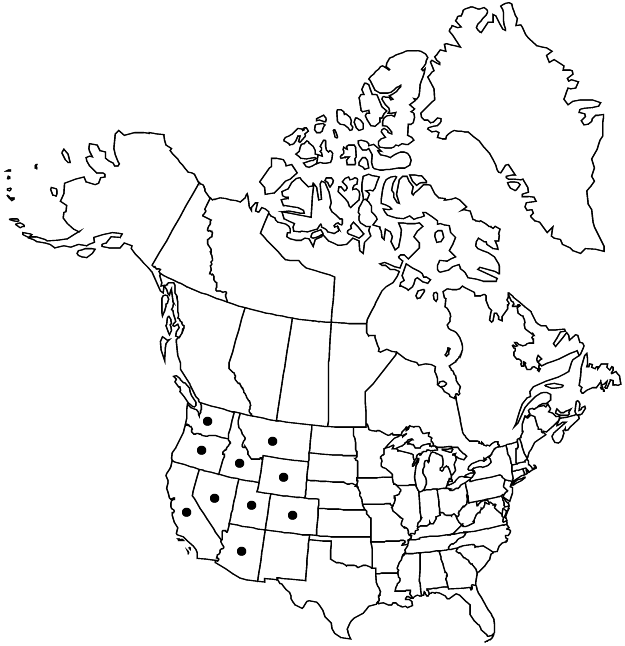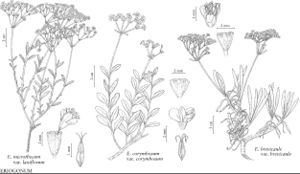Eriogonum microthecum var. laxiflorum
Hooker’s J. Bot. Kew Gard. Misc. 5: 264. 1853.
Subshrubs, (1–) 2–4 (–5) × 3–8 dm. Stems: caudex absent; aerial flowering-stems 0.2–0.6 (–0.8) dm, floccose or tomentose, rarely glabrous. Leaf-blade usually elliptic, (0.5–) 1–2 (–2.5) × (0.1–) 0.2–0.6 (–0.8) cm, densely to sparsely whitish-tomentose abaxially, less so to sparsely whitish-floccose adaxially, margins not revolute. Inflorescences (1–) 2–4 (–8) cm; branches floccose or glabrous. Involucres 2–3 (–3.5) mm, subglabrous, glabrous, or merely floccose between angled ridges. Flowers 2–3 mm; perianth white to pink or rose. Achenes 2–3 mm.
Phenology: Flowering Jun–Oct.
Habitat: Sandy to gravelly flats and slopes, mixed grassland, saltbush, blackbrush, and sagebrush communities, pinyon-juniper and montane conifer woodlands
Elevation: (400-)1500-3200 m
Distribution

Ariz., Calif., Colo., Idaho, Mont., Nev., Oreg., Utah, Wash., Wyo.
Discussion
Variety laxiflorum is the common expression of the species in the northern part of the species’ range. It occurs in northern Arizona, eastern California, western Colorado, central and southern Idaho, southwestern Montana, Nevada, eastern Oregon, northern and western Utah, eastern Washington, and southwestern Wyoming. It overlaps morphologically with var. simpsonii in northern Arizona. The variety is the primary host plant for the rare Mattoni blue butterfly (Euphilotes rita mattoni).
Selected References
None.
Lower Taxa
"/2" is not declared as a valid unit of measurement for this property."dm" is not declared as a valid unit of measurement for this property."dm" is not declared as a valid unit of measurement for this property."dm" is not declared as a valid unit of measurement for this property."dm" is not declared as a valid unit of measurement for this property.
